|
In This Issue
·
Unknown
·
Paleo
·
Fragment
·
Meeting
·
Lost
·
Loss
·
Unseen
·
Biblio
The
Samaritan Update, is a Monthly Internet Newsletter, a
Division of The-Samaritans.com.
Subscription is free via E-mail only.
-----
Editor: Shomron
Co-Editor: Osher
Sassoni
Staff Writer:
Staff Photographer:
Staff Translator:
Special Contributors:
----
Contact information:
The Editor
Your link to the
Update Index
and to our
Web Site: The-Samaritans.com
Still under repairs
To be published soon!
November 20, 2008
SAMARITANS' PAST AND PRESENT: Current Studies (Hardcover)
by
Menachem Mor (Editor)
Hardcover
Publisher: Walter De Gruyter Inc (November 30, 2008)
Language: English
ISBN-10: 311019497X
ISBN-13: 978-3110194975
Subscribe To the Newsletter -The
Samaritan Update.
Sign Up !
For More Information
New Archive
In PDF
Samaritan
Studies and Related
Conferences:
Upcoming Society of Biblical Literature Meeting
In Boston, November 21-25, 2008
see this issue
In Planning Stage
SES:
In
University of
Papa/ Hungary in 2008.
organised by Dr.
Joseph Zsengelle'
Important Links
Samaritan Museum on Mount Gerizim.
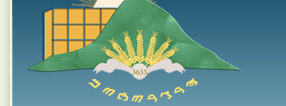
Wonderful photos of
the Samaritan 2006 in pdf format. A must see!
Les Samaritains

Have you
purchased your book lately?
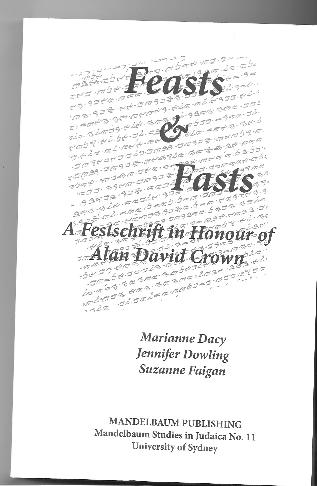
Feasts &
Fasts, A Festschrift in Honor of Alan David Crown
Available from
www.mandelbaum.
usyd.edu.au
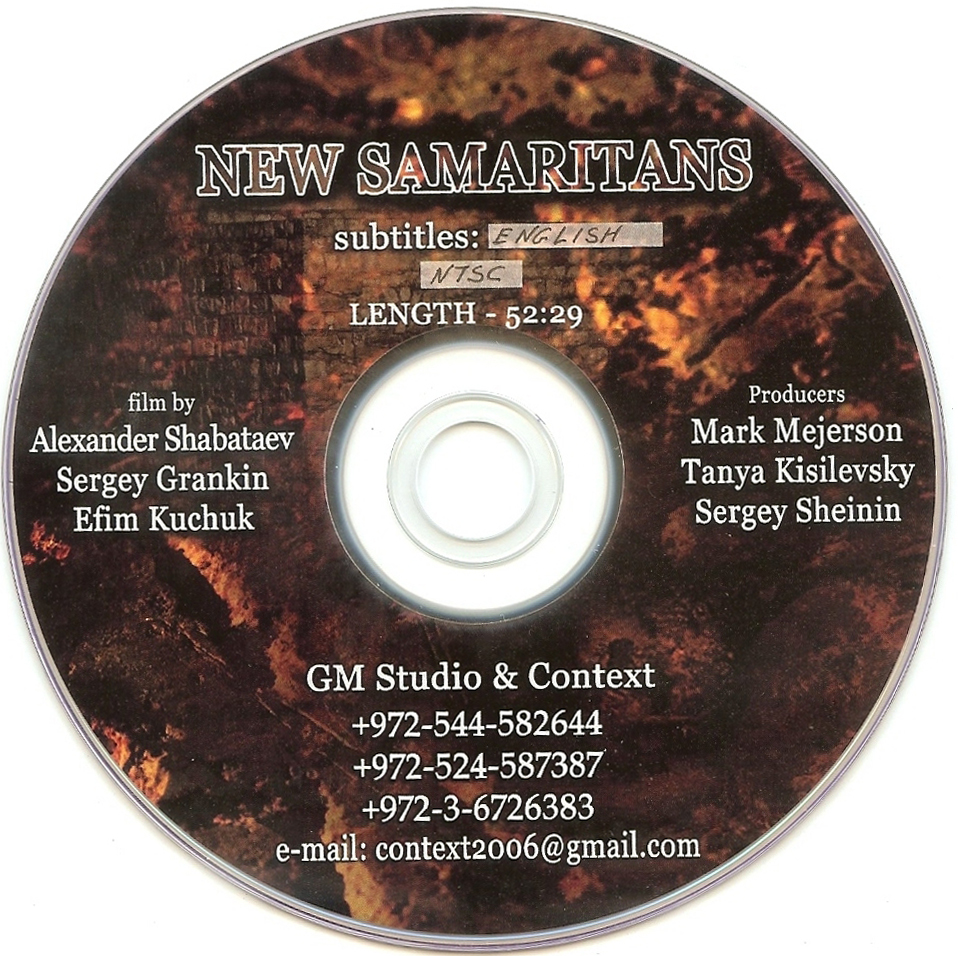
New Samaritans-
A DOCUMENTARY on Samaritan brides from the Ukraine
Finnish Arabic Dictionary by H. Shehadeh
here for article in Arabic
BABA RABBA
Baba
Rabba (Great Gate) was born 307 years before Mehmet (Muhammad's name as child)
according page 55 of The Companion to Samaritan Studies, edited
by Alan D. Crown, Reinhard Pummer, Abraham Tal. So if Muhammad was born
in 570 CE, then the birth of Baba Rabba would have been 263 CE. Had
Rabba lived 32 years before he gave up politics, it would have been 295CE.
|
An Unknown Dead Sea Scrolls Fragment
of Deuteronomy
James H. Charlesworth
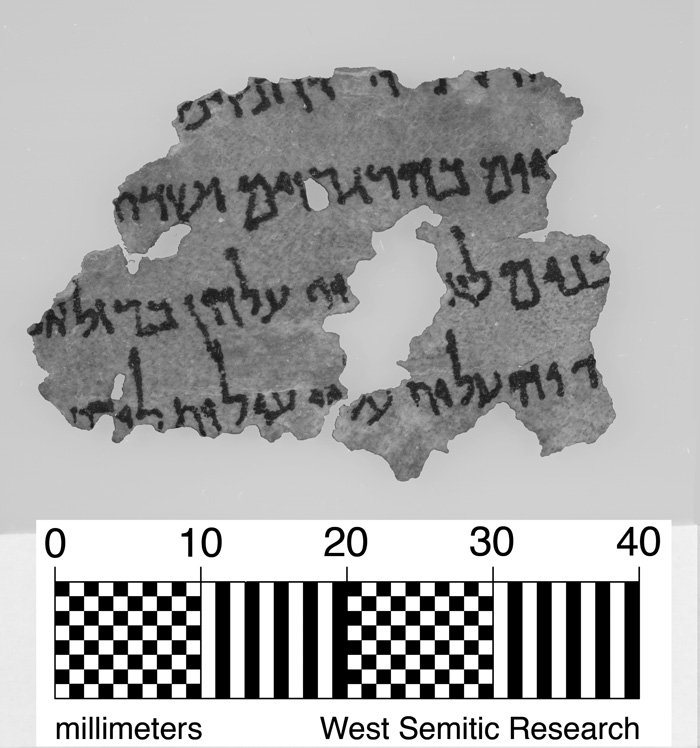 The
Dead Sea Scroll fragment is published with the permission of Legacy Ministries
International in greater Phoenix, Arizona. The IR image is the product of the
unusual skills of Bruce and Ken Zuckerman of West Semitic Research in Rolling
Hills Estates, California. The
Dead Sea Scroll fragment is published with the permission of Legacy Ministries
International in greater Phoenix, Arizona. The IR image is the product of the
unusual skills of Bruce and Ken Zuckerman of West Semitic Research in Rolling
Hills Estates, California.
For the
transcription, see Nota Bene which allows diacritics and thinks right to left.
The alignment approximates the arrangement of consonants on the leather and
the margins for the edges of the fragment.
Codicology: width:
circa 38 millimeters, four lines of text, black ink on brown leather, holes,
especially a tear from above line three through line four, no margins, no
horizontal or vertical lining visible; no writing on back. Though the SP has
more sense divisions than the so-called MT, there is no division indicated
before the beginning of verse six (end of line four).
Date: The fragment is too small to
be cut for AMS C-14 analysis. While there are few consonants, one can judge
the work to be mostly in a late Hasmonean Book Hand.
Palaeography: The
scribal hand represents archaic forms that can be dated perhaps to 175 BCE and
later forms that date from around 50 and even conceivably to 30 BCE (but we
cannot ascertain when such forms first appeared).
Aleph: two examples, two strokes, stiff left leg as in the late Hasmonean book
hand of c. 50 BCE (similar to 4QSama and 1QIsab).
Beth: three examples, two strokes, concave top, sloping lower horizontal line
(similar to 4QSama and 1QIsab).
Gimel: one example, two strokes, bent initial vertical line (as in 4QSama
and 1QIsab).
Daleth: two examples, two strokes, squared tops (as in 4QSama and
1QIsab).
He: three examples (not identical forms), two or three strokes, thick
horizontal line that sometimes extends to the left with higher right shoulder
(as in the Hasmonean Script of c. 125-100 BCE; cf. 4QDeute and
1QIsaa).
Waw and Yod: the Waw is longer, but both have a triangular head (as in 4QSama
and 1QIsab).
Lamed: seven examples; one stroke, long form with flat horizontal line and
curved right vertical extension, as 4QSama and 1QIsab
(it continues in the later 1QM).
Mem: Final form with three examples, two forms, similar to 1QIsab.
Ayin: four examples that are different, two strokes showing a full form (not
the small Ayin of earlier scripts), curved and sloping initial stroke as in
4QSama and 1QIsab (but also similar to 4QDeute
and 1QIsaa).
Resh: two examples, a distinguishing consonant with one flowing curved stroke
as in the Hasmonean semiformal script of c. 175-125 BCE (slightly later than
4QQoha).
Shin: one example, three strokes, curved right vertical form as in the
Hasmonean Script (somewhere between 4QDeute or 1QIsaa
and the later 4QSama and 1QIsab).
Taw: three partially preserved examples which are not identical; the final
example has two strokes with raised first horizontal stroke and cured right
shoulder as in 4QDeute and 1QIsaa.
In my judgment, it
seems an old scribe, using archaic forms learned in his youth, copied this
Samaritan Pentateuch sometime around the middle of the first century BCE.
The scribe uses a
mixture of scriptio continua and separated words. Final forms: three
examples of a final Mem and a final Nun [and possibly part of a final Kaph].
The Waw and Yod along with the Resh and Daleth are distinguishable. Against
both SP and MT, the author employs scriptio plena in line four: עולות.
Text: Deuteronomy 27:4b-6
Text Type: Samaritan Pentateuch. The fragment preserves two variants with the
SP [see transcription and notes].
Provenience: The one who sold the
fragment claims it is from Qumran Cave IV.
Translation: (4)
“[And when you have cross]ed the Jo[r]dan, you shall set u[p these stones,
about which I charge you] today, on Mount Gerizim, and coat [them with
plaster. (5) And there, you shall build an altar to the LORD your God, an
altar of st]ones. [You must] not wield upon them an iron (tool). (6) [Of
unhewn] st[ones you must build the altar of the LORD] your [God], and you
shall offer upon it burnt offerings to the LOR[D your God.]”
Preliminary Reflections: see
Full Article at- IJCO-
http://www.ijco.org/?categoryId=28682
~~~~~~~~~~~~~~~~~~~
PaleoJudaica.com
TWO ANCIENT BIBLICAL SCROLL FRAGMENTS, reportedly from Qumran Cave 4, have
been published by James H. Charlesworth on the Institute for Judaism and
Christian Origins website.
One is a fragment of
Deuteronomy 27:4b-6 that, very interestingly, reads with the
Samaritan Pentateuch in having Moses command the Israelites to build an
altar on Mount Gerizim, not Mount Ebal as in the Masoretic Text. Charlesworth
argues that this is actually a copy of a Samaritan Pentateuch, which is
possible. 4QpaleoExodm also has the Samaritan Pentateuch's
expansions taken from elsewhere in the Pentateuch, but it lacks the
historical/theological changes pertaining to Samaritanism vs. Judaism. This
variant in the new Deuteronomy manuscript is a significant historical
difference from the MT, and arguably it is an alteration to support the
theological position that the Samaritan temple was the legitimate sanctuary of
YHWH. That said, it's also possible that this is just a variant reading,
perhaps even an original one, which was used later by the Samaritans to
advance their own political and theological agendas. I would be more convinced
that this is a Samaritan manuscript if it had an unequivocal Samaritan
theological alteration such as the addition of this same passage (with Mount
Gerizim in it) after
Deuteronomy 5:21(18) as part of the Ten Commandments. (Conceivably that
actually is where it comes from in this manuscript, but we don't have any
context that would tell us.)
The other fragment is of
Nehemiah 3:14-15. If it actually is a Qumran fragment, it is quite
important, since it would be the only surviving bit of the book of Nehemiah
recovered from Qumran.
Both fragments are quite significant; so much so that one has to wonder about
their authenticity. I look forward to hearing the details of their
authentication in the formal publications. (Via
Jim West.)
UPDATE (21 July): Further thoughts. One point in favor of Charlesworth's
interpretation is that a cultic installation with a
stone altar dating to the
Iron Age I period has actually been excavated on Mount Ebal and it has been
argued that this is the altar mentioned in Deuteronomy 27 (reported as
actually built in Joshua 8:30-32). If so, then "Mount Ebal" is the original
reading in Deuteronomy and "Mount Gerizim" is a secondary Samaritan
alteration. Therefore this manuscript fragment (assuming it's genuine) is from
a Samaritan manuscript. It's possible that the writer of Deuteronomy either
had a tradition of an ancient Israelite altar on Mount Ebal or knew of the
ruins of an ancient altar there, but it's an interpretive leap, even if a
plausible one, to connect the archaeological site with the text of
Deuteronomy.
Also, Sharon Sullivan Dufour has relayed a message from Benyamin Tsedaka, who
is currently at the SES (Societe des Etudes Samaritaines) conference in Papa
Hungary, which opened yesterday. The information about the new manuscript "has
created quite a stir of excitement among the scholars at the SES." Mr. Tsedaka
points out that this fragment, if it is a Samaritan text, could also come from
the book of Exodus. This passage is added to
Exod 20:17 in the Samaritan tradition. Unless we find more of the text, we
can't be sure whether this was a Deuteronomy manuscript or an Exodus
manuscript. UPDATE (23 July): More thoughts
here.
http://paleojudaica.blogspot.com/2008_07_20_archive.html#4920604927726271238
`````````````````````````
http://hebrewscripturesandmore.com/Blog
`````````````
The discussion
concerning the new
Deuteronomy fragment has
been continued by Jim Davila in two important posts. The post,
FURTHER THOUGHTS has noted that the reading
bhrgrzim although typical
of Samaritan provenance may have more complex background. Davila also points
to an important article: R. Pummer, from JSJ 18 (1987): 18-25. The
next post,
STILL MORE THOUGHTS refers to an article: Shemaryahu Talmon, “A Masada
Fragment of Samaritan Origin,” Israel Exploration Journal 47 (1997), 220-32,
which identified a paleo-Hebrew fragment from Masada that has the continuous
spelling for Mt. Gerizim.
If this fragment is genuine and
with a Qumran provenance, it does not in any stretch of the imagination mean
that the Qumran community was Samaritan-sectarian per say. However, I wonder
if the presence of the fragment and the Masada fragment may indicate that
Judean/Samaritan relationship was not as overwhelmingly antagonistic as some
may argue. That there was a certain level of interchange so that Samaritan
sectarian materials would be read and known by some Judeans.
In my own research, I have been
struggling with the reasons involved in the SP expansions of the book of
Numbers by quotations from Deut 1. The theories that they were
harmonizations is strange since at times they create more problems than they
solve. The idea that the expansionistic texts are a scholarly edition is not
persuasive since the insertions tend to be clustered in specific areas.
Furthermore, legal materials a generally avoided. The strange fact that the
LXX as a translation preferred an intertextual connection with Genesis
through Leviticus and especially Exodus is interesting.
http://hebrewscripturesandmore.com/Blog/?p=51
~`
also see
http://ntwrong.wordpress.com/2008/07/21/deuteronomy_27_4/
~~~~~~~~~~~~~~~~~~~
Upcoming Society of Biblical Literature Meeting
In
Boston, November 21-25, 2008 the Society of Biblical Literature will host
their 2008 annual meeting. Highlights include, the SBL22-57 Biblical Lnads and
Peoples in Archaeology and Text section, with the theme, Samaria and the
Samaritans. In this session:
Deborah Cantrell, Vanderbilt University: The Samaritan Chariotry
(25min.)
Norma Franklin, Tel Aviv University; The Proto-Aeolic Capitals from
Samaeria and Gerizim: A Different Perspective (25min)
Christopher A. Rollston, Emmanuel School of Religion; The Reisner
Samaritan Ostraca and the Joint Expedition Inscriptions (25 min)
Gary A. Rendsburg, Rutgers University; Israelian Hebrew,
Inscriptions from the North of Israel, and Samaritan Hebrew: A Complex of
Northern Dialects. (25 min)
Also at the meeting;
Stenfan Schorch, Kirchliche Hochschule Bethel; Towards a Critical
Edition of the Samaritan Pentateuch: Presentation of the Project (30 min)
Magnar Kartveir, School of Mission and Theology (Misjonshogkolen i
Stavanger);
Genesis 34 Used as an Anti-Samaritan text in Jewish Writings from the
Second Century BCE (20 min)
Molly Zahn, University of Notre Dame; When the New Edition still Needs
Editing; narrative and Exegetical "Improvements to Pre-Samaritan Exodus
20:19-22 in 4Q158 (25 min)
http://www.sbl-site.org/meetings/AnnualMeeting.aspx
~~~~~~~~~~~~~~~~~~~
'Lost' chassidic treasures may have turned up
A GROUP of Jewish experts may have discovered "lost" chassidic documents
in Manchester's John Rylands library. They could include records of
chassidic courts that were lost during upheavals caused by wars that
ravaged eastern Europe from the time of Napoleon to World War One. The
manuscripts were among 18 unattributed chassidic documents shown to the
visiting experts by the keeper of manuscripts and archives, John Hodgson.
The visitors established that most of the early and mid-19th century
material comprised hundreds of pages of Shabbat lectures and legal
opinions of early Lubavitcher Rebbes. Afterwards, Mr Hodgson said: "The
staff learned a great deal about the manuscripts from our visitors. "It
was inspiring and exciting to realise their significance. "We hope that we
can arrange for the manuscripts to be properly catalogued and digitised,
and that they receive the scholarly attention they deserve."
Making the private study visit were Talmud lecturer Rabbi Simcha Bamberger,
Manchester Beth Din registrar Rabbi Yehuda Brodie, bibliophile and amateur
scholar Elozor Reich and Manchester University historian of orthodoxy Dr
Yaakov Wise.
Dr Wise has offered to help the recently-extended city-centre library
establish whether any of the documents are, in fact, unique lost records
of early chassidic discourses.
He is planning another visit accompanied by the Holy Law Synagogue's Rabbi
Yossi Chazan - an expert on Lubavitch literature.
The hundreds of pages of notes poured over by the experts include those of
early Lubavitcher Rebbes Schneor Zalman of Liadi (the Baal HaTayna,
1745-1812), the Mittler Rebbe (Dov Ber of Lubavitch, 1773-1838) and the
Tzemach Tzedek (Menachem Mendel of Lubavitch, 1779-1866).
Other material includes a notebook of a Rabbi Nochum of Rudnik, probably
connected to the Sanz chassidic dynasty.
The notebooks are from the Dr Moses Gaster collection.
In 1954, the John Rylands library purchased a large collection of
manuscripts in Hebrew, Samaritan and other scripts assembled by Rabbi Dr
Moses Gaster (1856-1939).
Romania-born Rabbi Gaster was forced to leave his native country in 1885
as a result of antisemitic persecution and took refuge in England.
He became Hakham (Chief Rabbi) of the Sephardi communities of England in
1886, and held the office until his retirement in 1919.
A distinguished academic scholar with a long list of publications to his
name, his interests ranged from the Hebrew siddur, the minutiae of Hebrew
text study and apocryphal Hebrew literature to Jewish amulets and Romanian
folklore.
The Rylands' Gaster collection comprises more than 10,000 fragments in
Hebrew and Judaeo-Arabic from the genizah of the Synagogue of Ben Ezra in
Old Cairo.
There are 350 Hebrew codices and scrolls, including prayer books from many
Jewish communities, apocryphal writings, commentaries, treatises, letters,
marriage contracts, piyyutim, 13 Sifrei Torah and almost 1,500
uncatalogued Arabic fragments on paper from the Ben Ezra Synagogue.
The library was founded in 1888 by Mrs Enriqueta Rylands in memory of her
husband John.
In 1889, architect Basil Champneys designed the striking gothic building
on Deansgate which was voted Manchester's most "iconic" building in 2007.
The library took nine years to build.
Mrs Rylands insisted on the finest materials and the building was lavishly
decorated.
Traditional craftsmanship was combined with pioneering technology, such as
electric lighting - the first public building in Manchester to be fully
lit by electricity.
http://jewishbreakingnews.blogspot.com/2008_03_30_archive.html
~~~~~~~~~~~~~~~~~~~
|
Ancient Community Faces Population Loss |
|
By Jim
Teeple
Jerusalem
09 July 2008 |
|
Samaritans report / Broadband - Download
(WM)
Samaritans report / Broadband
- Watch (WM)
There are few communities in the world more ancient than
the Samaritans. For centuries, the Samaritans have lived in isolation. But now
as their numbers diminish, some are looking to the outside world to replenish
their numbers. VOA's Jim Teeple has more in this report from the
Israeli-occupied West Bank.
see article
http://www.voanews.com/english/2008-07-09-voa42.cfm
~~~~~~~~~~~~~~~~~
Samaritans A must see blog with great photos
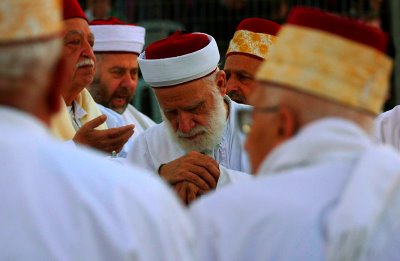
http://seeunseen-majah.blogspot.com/2008/07/samaritans.html
~~~~~~~~~~~~~~~~~
Gaster Biblio
The Expository
Times, Vol. 28, No. 11, 518-520 (1917)]
"The Grandson" by
Moses Gaster pg 518 mentions Samaritan sources
DOI: 10.1177/001452461702801107 © 1917 SAGE Publications
http://ext.sagepub.com/cgi/pdf_extract/28/11/518
Haham Moses
Gaster and his wife outside their London home. Haham Gaster was Philip
Laski's maternal grandfather and Nathan Laski's wife's parents. - ref. 755/1
- date: No Date
http://www.a2a.org.uk/search/documentxsl.asp?com=1&i=0&nbKey=1&stylesheet=xsl\A2A_com.xsl&keyword=moses%20gaster&properties=0601
~~~~~~~~~~~~~~~~
Biblio addition:
Scribal Habits in the Ancient
world
A book
just released and the first review copies were sent out last week. It is by
June Ashton, is called Scribal Habits in the Ancient World and sells for
AU$22.99 Publisher is Mandelbaum Publishing, University of Sydney. The
Samaritan scribal practices are compared with ancient Jewish and other
scribal practices and shown to be of a common ancestry.
http://judaica.library.usyd.edu.au/bulletins/bull43.html
|




 The
Dead Sea Scroll fragment is published with the permission of Legacy Ministries
International in greater Phoenix, Arizona. The IR image is the product of the
unusual skills of Bruce and Ken Zuckerman of West Semitic Research in Rolling
Hills Estates, California.
The
Dead Sea Scroll fragment is published with the permission of Legacy Ministries
International in greater Phoenix, Arizona. The IR image is the product of the
unusual skills of Bruce and Ken Zuckerman of West Semitic Research in Rolling
Hills Estates, California.